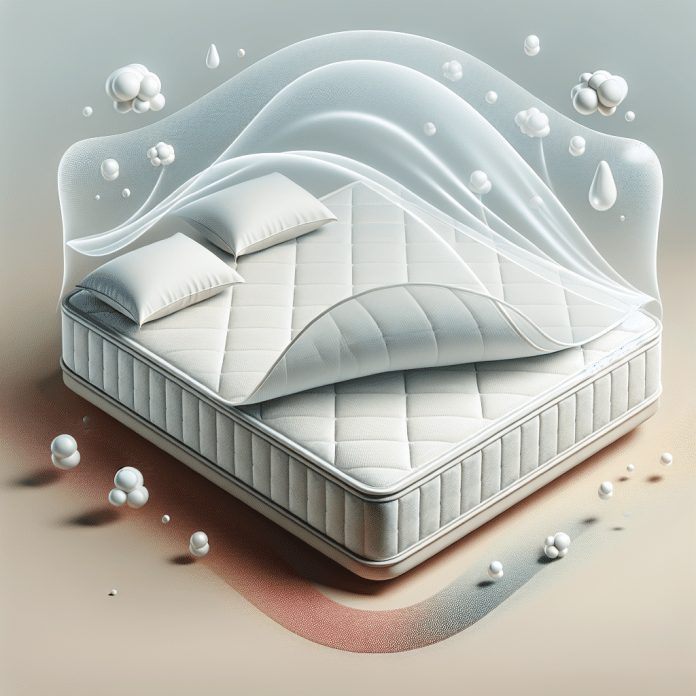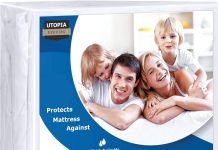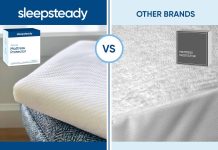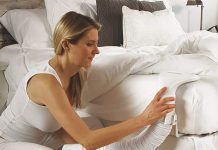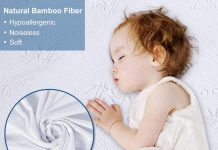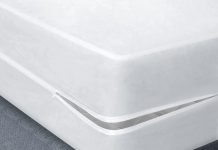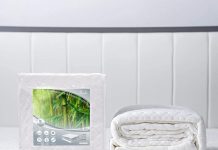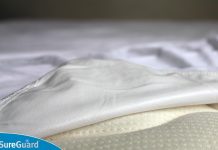We all know that a comfortable and clean bed can make a huge difference in our sleep quality. But have you ever wondered if your mattress protector is actually doing its job? Well, in this article, we will explore the signs that indicate whether your mattress protector is working effectively or not. Whether it’s protecting your mattress from spills, stains, or even those pesky bed bugs, we’ve got you covered. So, let’s delve into the world of mattress protectors and find out if yours is truly working its magic!
Review contents
Signs to Look for
When it comes to our sleep, we want to ensure that we are resting on a clean and comfortable mattress. One way to protect our mattresses is by using a mattress protector. But how do we know if our mattress protector is working? Let’s take a look at some signs to look for.
No Stains or Spills on Mattress
One of the key purposes of a mattress protector is to prevent any stains or spills from reaching the mattress. A good quality mattress protector should have a waterproof or water-resistant barrier, ensuring that any liquid that comes into contact with it does not seep through to the mattress. So, if you find that there are no stains or spills on your mattress despite accidental spills or accidents, it’s a great indication that your mattress protector is doing its job.
No Bed Bugs or Dust Mites
Bed bugs and dust mites are unwanted guests that can wreak havoc on our sleep and overall well-being. These tiny pests can multiply rapidly and cause itching, allergies, and other respiratory problems. A mattress protector should act as a barrier, preventing bed bugs and dust mites from infesting your mattress. If you have not noticed any signs of bed bugs or dust mites, such as bites or tiny black specks on your mattress, it’s a good sign that your mattress protector is doing its job in keeping these nuisances at bay.
No Allergic Reactions
For those with allergies or sensitivities, a mattress protector can be a game-changer. It helps create a barrier between you and potential allergens, such as dust mites, pet dander, or pollen. If you find that you have been experiencing fewer allergic reactions since using a mattress protector, it’s a clear indication that your protector is effectively blocking allergens from reaching your mattress.
No Unpleasant Odors
Over time, mattresses can absorb odors from sweat, spills, or other sources. A mattress protector can help prevent these odors from seeping in and lingering in your mattress. If you find that your mattress smells fresh and clean, even after months or years of use, it shows that your mattress protector is effective in blocking unpleasant odors.
No Noise or Crinkling Sounds
Some mattress protectors can be noisy and uncomfortable, making it difficult to have a peaceful and quiet sleep. However, a good mattress protector should be quiet and unobtrusive, allowing you to rest peacefully. If you haven’t noticed any noise or crinkling sounds while sleeping on your mattress, it’s a clear indication that your mattress protector is working effectively.
Performing Some Tests
If you’re still unsure whether your mattress protector is working as it should, there are a few tests you can perform to ensure its effectiveness.
Water Resistance Test
To determine if your mattress protector is truly water-resistant, you can conduct a simple test. Take a small amount of water and pour it onto the surface of the protector. Wait for a few minutes, then check if the water has seeped through to the mattress. If the water remains on the surface and does not penetrate the protector, it means that your mattress protector is indeed water-resistant.
Dust Mite Barrier Test
Dust mites are a common allergen, so it’s important to ensure that your mattress protector is effectively preventing these microscopic creatures from entering your mattress. One way to test this is by inspecting your mattress after some time of using the protector. If you find that there are no signs of dust mites, such as small black specks or skin flakes, it indicates that your mattress protector is doing its job as a dust mite barrier.
Bed Bug Prevention Test
Bed bugs are a nightmare to deal with, so it’s crucial to know if your mattress protector is preventing their invasion. One way to test this is by conducting regular bed bug inspections. Check the seams, crevices, and corners of your mattress for any signs of bed bug activity. If you haven’t noticed any bed bugs or their droppings on your mattress, it demonstrates that your protector is serving its purpose as a bed bug prevention measure.
Allergen Barrier Test
If you have allergies, testing the effectiveness of your mattress protector in blocking allergens is essential. If you notice a significant decrease in allergy symptoms, such as sneezing, coughing, or itchy eyes, since using a mattress protector, it’s a clear indication that it is functioning as an effective allergen barrier.
Maintenance Tips
To ensure the longevity and continued effectiveness of your mattress protector, it’s important to follow these maintenance tips.
Regular Cleaning
Cleaning your mattress protector regularly is crucial to prevent the buildup of dirt, sweat, and allergens. Check the care instructions provided by the manufacturer and follow them accordingly. Most mattress protectors can be machine washed and dried on low heat. Make sure to clean the protector at least once every three months or as recommended by the manufacturer.
Proper Mattress Fit
Ensure that your mattress protector fits your mattress properly. A loose or ill-fitting protector may not provide the full benefits and could lead to discomfort. Take accurate measurements of your mattress before purchasing a protector to ensure a proper fit.
Replacing When Necessary
Like any other bedding accessory, mattress protectors have a lifespan. Over time, they may lose their effectiveness or become worn out. If you notice any signs of deterioration, such as rips, tears, or a decrease in performance, it’s time to replace your mattress protector. A good rule of thumb is to replace it every 2-3 years or as recommended by the manufacturer.
Common Issues
While mattress protectors are generally reliable, there are a few common issues that may arise.
Improper Installation
Improper installation of your mattress protector can lead to reduced effectiveness. It’s important to carefully follow the manufacturer’s instructions to ensure that you are fitting the protector correctly and securely.
Quality of Mattress Protector
Not all mattress protectors are created equal. Some may be of lower quality and not provide the desired level of protection. When purchasing a mattress protector, it’s important to invest in a reputable brand and read reviews to ensure you’re getting a high-quality product.
Incompatible Materials
Certain mattress protectors may not be suitable for certain mattress types or materials. For example, some protectors designed for traditional mattresses may not fit properly on memory foam or hybrid mattresses. It’s crucial to check the compatibility of the protector with your specific mattress type before purchasing.
Consult Professionals
If you have any doubts or questions about the effectiveness of your mattress protector, don’t hesitate to consult professionals who can provide expert advice.
Mattress Store Experts
The staff at mattress stores are knowledgeable about various bedding products, including mattress protectors. They can guide you in selecting the right protector for your needs and address any questions or concerns you may have.
Mattress Protector Manufacturers
If you want more in-depth information about your specific mattress protector, contacting the manufacturer directly can be beneficial. They can provide valuable insights and instructions on how to determine if your protector is working optimally.
Conclusion
A mattress protector is an essential accessory for maintaining the cleanliness, hygiene, and longevity of your mattress. By looking for signs such as no stains or spills, no bed bugs or dust mites, no allergic reactions, no unpleasant odors, and no noise or crinkling sounds, you can determine if your mattress protector is working effectively. Additionally, performing water resistance, dust mite barrier, bed bug prevention, and allergen barrier tests can further validate the performance of your protector. Remember to follow maintenance tips, be aware of common issues, and seek professional advice when needed. With a reliable and well-maintained mattress protector, you can enjoy a clean, comfortable, and peaceful sleep night after night.

